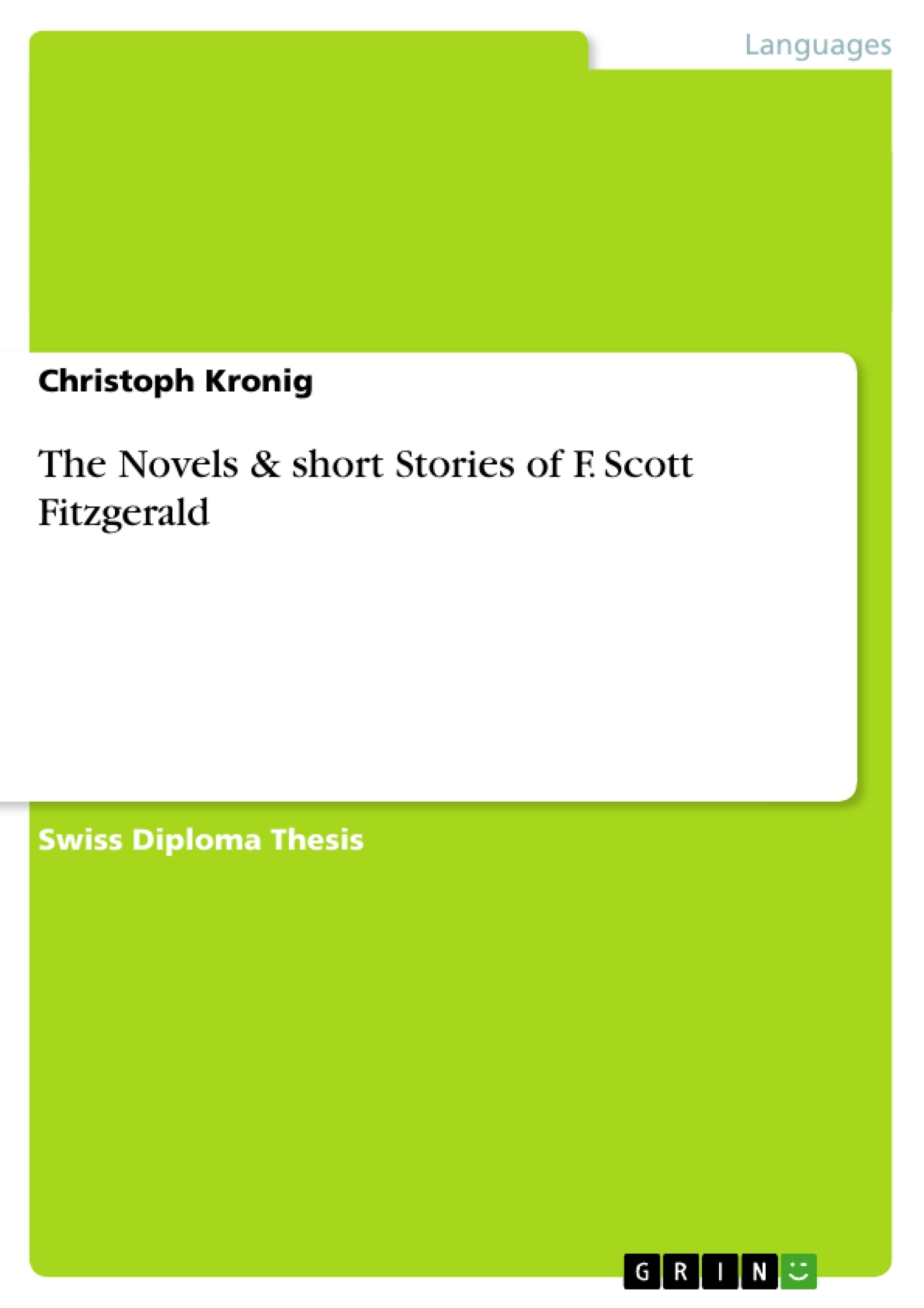In May 1916, F. Scott Fitzgerald sent the manuscript of his first novel to Charles Scribner’s Sons. The first title Fitzgerald gave to this novel was The Romantic Egotist. Scribner rejected the manuscript, claiming that it was poorly organised and lacked a conclusion. But they encouraged him to revise and resubmit the manuscript of what was later to become This Side of Paradise, a tremendously successful novel. In 1918, Fitzgerald sent a hurriedly revised version of the novel, which he was still calling The Romantic Egotist, back to Scribner’s. He had not taken the trouble to work over it carefully, because he was convinced that he was going to die in the war. The manuscript was again rejected. Nevertheless, Fitzgerald decided to completely rewrite the story of The Romantic Egotist, after being discharged from the army in 1919. He shortened the original manuscript considerably and reorganised the whole novel, which had now acquired the working title The Education of a Personage2. In July 1919, he wrote to Maxwell Perkins, a Scribner’s editor who believed in Fitzgerald’s literary talent, that the new draft was “in no sense a revision of the ill-fated Romantic Egotist” (L 155), although he admitted that it contained much material from the rejected manuscript (L 156). What made the new draft so much better in the eyes of his publisher, who finally accepted the novel and published it as This Side of Paradise in March 1920, was the sum of Fitzgerald’s many, this time careful, revisions. [...]
Inhaltsverzeichnis (Table of Contents)
- "Go on talking,' said the big man"
- "Let's not get to know anybody, but just stay together"
- "So many smart men go to pieces nowadays"
- "Hollywood: This is no art... - this is an industry"
Zielsetzung und Themenschwerpunkte (Objectives and Key Themes)
This mémoire analyzes F. Scott Fitzgerald's novel This Side of Paradise, tracing its development from initial rejection to eventual publication. It examines the evolution of the narrative structure and character development across multiple drafts and explores the thematic consistency throughout its revisions.
- The evolution of This Side of Paradise from its initial conception as The Romantic Egotist.
- The role of Fitzgerald's personal experiences in shaping the novel's narrative.
- The development of the character Amory Blaine and his portrayal of the "romantic egotist."
- Fitzgerald's stylistic choices and their impact on the novel's overall effect.
- The relationship between the novel's structure and its thematic concerns.
Zusammenfassung der Kapitel (Chapter Summaries)
"Go on talking,' said the big man": This chapter introduces Amory Blaine and explores his early life and experiences, highlighting his intelligence, social awareness, and burgeoning egotism. It covers his childhood and early education.
"Let's not get to know anybody, but just stay together": This section delves deeper into Amory's relationships and social interactions at school, emphasizing the complexities of his personality and his struggles with forming meaningful connections. His social dynamics and ambitions are explored.
"So many smart men go to pieces nowadays": This chapter likely focuses on Amory's experiences at Princeton, his intellectual pursuits, and the pressures he faces in navigating both academic and social life. This period of his life is further explored within the context of the era.
"Hollywood: This is no art... - this is an industry": This chapter likely details Amory's experiences after college and his encounters with the complexities of the adult world, perhaps touching upon his disillusionment or further development of his character.
Schlüsselwörter (Keywords)
F. Scott Fitzgerald, This Side of Paradise, The Romantic Egotist, Amory Blaine, Romantic Egotism, social commentary, coming-of-age, literary development, narrative structure, character evolution, Princeton, World War I.
- Citation du texte
- lic. phil. I Christoph Kronig (Auteur), 2004, The Novels & short Stories of F. Scott Fitzgerald, Munich, GRIN Verlag, https://www.grin.com/document/124162



